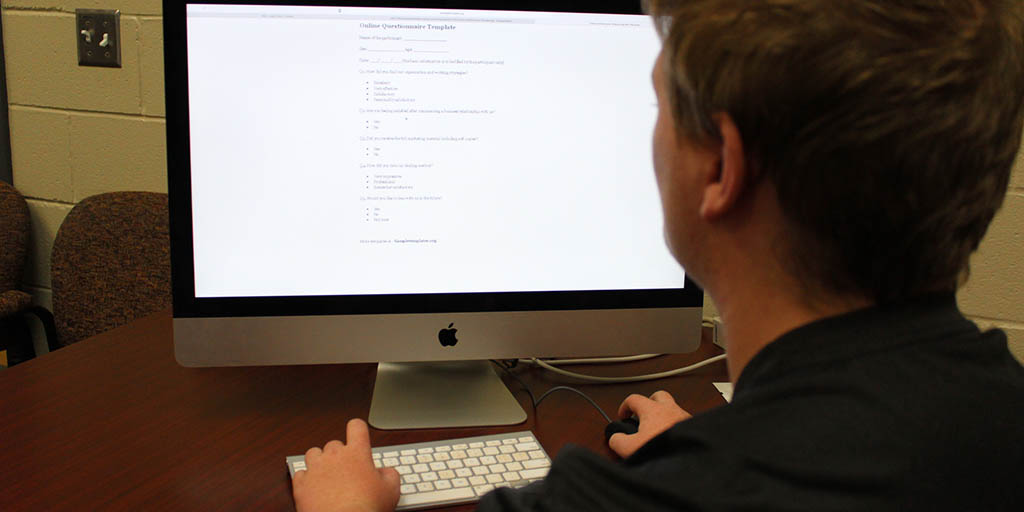Student Feedback Survey given a second go online
 CREDIT: KERRA SEAY
CREDIT: KERRA SEAYStudent Feedback Survey is all about getting student's voices heard, but this will be a test to see if online is really the right way to go.
The Student Feedback Survey (SFS) is back this year, with the hopes of having better results than the previous year.
This is the second year where the survey will be available to all students (in a four credit course) online.
There will be two separate surveys available, one that is geared specifically to students who are taking classes physically at the college, while the second version is solely for online classes.
“It’s really their (students) opportunity to provide feedback on their professor [and course],” according to Robert Downie, manager of Fanshawe’s Institutional Research and Strategy department.
Each survey will include a comment section, which will allow the students to add any feedback they would like, Downie said.
The survey is in partnership with the college, the Fanshawe Student Union (FSU) and Fanshawe Online (FOL), and is sponsored by the College Council.
According to Downie, approximately eight to nine Ontario colleges have moved to a fully online survey approach.
Downie said there are two components to why the survey is an important aspect to have.
“Students can provide feedback not just what they like and don’t like [in the course], but also what works and doesn’t work for them in the classroom. That feedback to the individual instructor or faculty can help them improve, of all various components of delivery,” Downie said.
The institution will also use the summary measure of the survey to monitor quality and use it in reporting to the college board and to senior levels, according to Downie.
“It’s really about maintaining quality, because all the measures are really quite high, across the college [and] across programs and so it’s more of a monitoring approach,” Downie said.
The comments from the students really put into context their experience of the course, he said.
According to Downie, this year is the first time the survey is being rolled out to all students in all programs and has actually been running since mid-September, for courses like apprenticeships, but the big survey period is Nov. 7 to Nov. 18. That’s mainly for the 15 week programs, which counts for roughly 85 per cent of all students.
According to Downie, students will receive an email invitation that will link to each of their survey for each class.
According to Downie, last year was a learning process and pilot project for the online version of the survey, which used new software and had a whole new process.
He said the results of surveys actually completed dropped while online to roughly 40 per cent, from the 68 per cent in class.
Downie said there’s a different approach to this year’s survey to have better results, including more communication and faculty interest. There’s a different communication strategy to get all the information out about the survey, Downie said.
“Nobody shows up [to class] anymore so we are much more dependent on faculty to communicate to their students, the importance of completing the survey,” Downie said.
To get more word about the survey out, the FOL ambassadors, and FSU representatives will be set up around campus during the two week period to explain the process of the survey, well equipped with iPads and laptops in hand that will let students fill out the survey right then and there.
There are also more incentives this year for students to fill out the survey. All students who complete their surveys will have their names put in a draw and could win $1,000 in Fanshawe Bucks which can be used for tuition, or a $500 Fanshawe FlexCard which can be used at campus food outlets and at the Fanshawe stores. The draw will occur mid-December.
Carlie Forsythe, president of the FSU, is positive about the SFS and said it has a lot of value.
“I was completely all for it, I think it has a big benefit for students and a big benefit for faculty too,” Forsythe said. “It’s a great way for students to communicate within the survey, for improvements, for comment, for faculty.”
Forsythe said the reason the survey shifted from paper to online was so that all courses, can now provide feedback, where as before, only 85 per cent of the programming and main programs who could do so.
“There’s always been a partnership [between FSU and the college], but this year I’m really working with them because there is a value in getting students’ voices heard for the improvement of their education,” Forsythe said.
Forsythe said she thinks it’s beneficial to have the survey online since students are always connected, new programs are able to take part in the survey as well and results can come in more quickly. However, response rates were low last year, which Forsythe said can be due to students procrastinating and eventually the time period closed.
“We didn’t get the response rates that we wanted unfortunately, so we realized this and they [college] came to me, asking me for different solutions and different ways we can get out there and partner and get more students responding to this,” she said.
One of her initial ideas was going to classrooms letting students know of the surveys with technology in hand. There will also be a faculty professor slide at the beginning of each class between the two week period. Kiosks will be around the campus as well, and food will also be available to entice student to fill out the server.
“It’s just getting the word out there and getting students to actually do it,” Forsythe said. “We figured the best way to get students to actually become engaged with this process is to get students to talk about it and talk about how important it is for students to give their feedback.”














